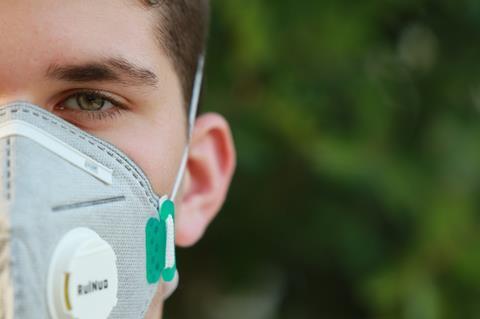“Artificial intelligence is a rapidly developing area with huge potential for cost savings, but also wasting money,” explains Prof Drew. “The key is to identify problems in your own institution that AI can help analyse and then fix. For example, can we ensure staff are wearing face masks properly? How do we keep the air/environment clean? When should we switch from intravenous to oral antibiotic therapy for individual patients?”
Mask wearing
For the face masks example, Prof Drew will refer to a review paper by Alturki et al, Frontiers in Public Health, 2022, where researchers reviewed how AI was used to both identify firstly if a mask was being worn at all, and secondly if it had been fitted properly. This review paper analysed over 30 papers on the use of facial recognition AI technology to assess if staff were wearing masks correctly, concluding AI performs very well in identifying correct mask wearing in general. “However, even though AI technology successfully identified correct mask wearing, we must be careful that staff do not find such monitoring too intrusive,” says Prof Drew.
He will also look how AI has evolved cleaning in hospitals from traditional manual scrubbing of all corners of the hospital to intelligent robots that know where to focus their cleaning. Robots are, with the assistance of AI, able to monitor the environment and air quality in real time, and then target cleaning where needed.
Recent advances in big data analytics have allowed for research groups from the UK (Bolton et al. Nature Communications, 2024) to analyse data from thousands of admissions to help identify when it is optimal to switch from IV antibiotics to oral antibiotics. Prof Drew explains: “Although this technology will not replace medical experience, it is a tool that could streamline antimicrobial stewardship rounds to focus in on patients who are suitable for oral switch, thus saving staff time and improving patient care.”
Key to AI use
In summary, Professor Drew will say the key to successful AI use in infection control is to first identify what problems your institution has and then see if AI can provide a solution.
He says: “We should look to offload repetitive tasks to AI systems such as environmental cleaning and mask compliance auditing. AI can also offer significant opportunities in terms of big data analytics of certain patient groups. However, we have to ensure that staff engage with AI developments, and do not feel overwhelmed with the data outputs or consider AI monitoring systems as too intrusive on their personal freedom.
”It is important too that health systems still appreciate that infection prevention and control (IPC) practitioners are always needed to spot new or emerging problems, identify cultural aspects of IPC, and ensure appropriate communication with other staff.”








No comments yet